124 years ago today, Isadora Duncan, the first modern dancer, made her debut as a solo interpretive dancer in London to crowds who marveled at her daring. Here, writes the Daily Telegraph at the turn of the millennium, was a very young woman, barefoot and underdressed, performing alone and without scenery—not some romantic fairy-tale of virtuous suffering, but a disconcertingly direct and spontaneous expression of her feelings about the music she was dancing to. She used Chopin’s piano preludes and Mendelssohn’s Spring Song. Her movements were extremely simple, improvisatory, and while the first instinct was to find it hyper erotic, almost everyone knew it was more than that. READ about the unexpected history of dance following this landmark performance… (1900)
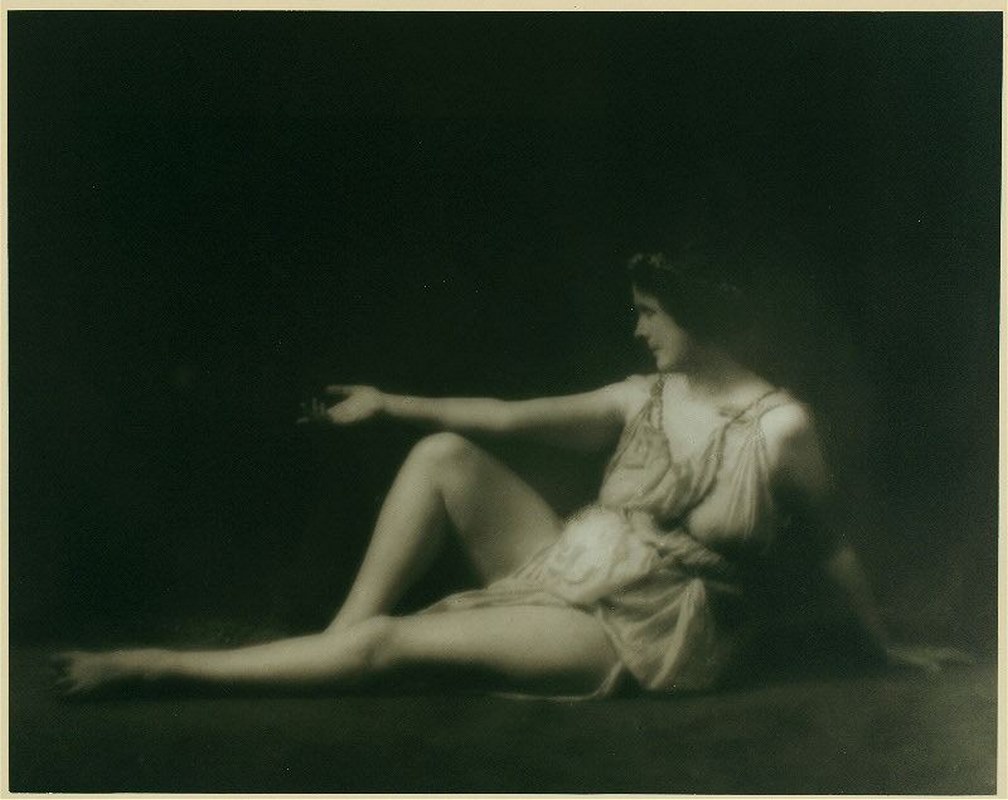
“I am an enemy to ballet, which I consider a false and preposterous art,” said Isadora once. “Under the tricots are dancing-deformed muscles; under the muscles are deformed bones.”
Shunning the camera, neither the March 17 performance, nor any other subsequent performance was recorded. As such, the only ones capable of teaching Duncan’s dance style were those who saw it in person. This made it a difficult, and now, a dead art.
Duncan spent hours every day we are told in London’s galleries and the British Museum. There she studied the statues and paintings of antique nymphs, solid and yet weightless,
naturally formed yet wholly feminine. For those who saw her dance, like Pierre August Rodin who called her the “greatest woman the world has ever known” it’s perhaps correct to say that they saw a kind of natural or imperfect perfection of slightly fleshy limbs and supreme confidence.
Today, the Telegraph writes, much of modern dance is as strict as ballet was when Duncan rebelled against it. It is honed, athletic, a body-distorting skill, “and we prefer it that way.” “We have seen too often some cumbersome, heavy-bottomed dancer emoting portentously and with minimal skill to a sad old ballad. Hindsight can sometimes be a hindrance to understanding rather than a help, and Isadora Duncan’s effect is best understood by accepting her through the eyes of those who saw her perform. They believed she was the woman who turned dance from a 19th-century entertainment into a 20th-century art.
MORE Good News on this Day:
- The rubber band was invented (1845)
- A showing of 71 Vincent van Gogh paintings in Paris, 11 years after his death, created a sensation (1901)
- 114 years ago today, the Camp Fire Girls was founded (1910)
- 83 years ago today, the National Gallery of Art opened in Washington, D.C. (1941)
- A referendum to end apartheid in South Africa was passed by 68.7% of voters (1992)
220 years ago today, Mountain Man Jim Bridger was born in Virginia. Known as the most famous figure in the mountain man era, Bridger led numerous expeditions into the wilds of the western interior. He had conversational knowledge of French, Spanish, and several Native American languages, and often mediated between them and eastern settlers. He spent decades fur trapping on the rivers and creeks of the Rocky Mountains and was among the first to have ever seen Yellowstone’s volcanic wonders.
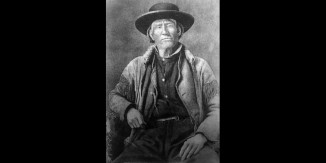
Apprenticed to a blacksmith, the illiterate Bridger took a place on a fur trapping expedition in 1822. For the next 20 years, he repeatedly traversed the continental interior between the Canada–U.S. border and the southern boundary of present-day Colorado, and from the Missouri River westward to Idaho and Utah, either as an employee of or a partner in the fur trade, along with many other mountain men like Jedediah Smith.
In 1843, Bridger and Louis Vasquez established Fort Bridger on the Blacks Fork of the Green River along the Oregon Trail. By this time, Bridger had 20 years of experience in all the skills needed to make a living in the wilderness and began operating out of the fort as a guide.
In 1850, while guiding the Stansbury Expedition on its return from Utah, Bridger discovered what would eventually become known as Bridger Pass, an alternate overland route that bypassed South Pass and shortened the Oregon Trail by 61 miles. Bridger Pass, in what is now south-central Wyoming, would later become the chosen route across the Continental Divide, for the Overland Stage, Pony Express, the Union Pacific Railroad Overland Route, and Interstate 80.
In addition to his explorations and his service as a guide and adviser, he was known for his storytelling. His stories about the geysers at Yellowstone, for example, proved to be true. Others were grossly exaggerated or clearly intended to amuse: one of Bridger’s stories involved a petrified forest in which there were “petrified birds” singing “petrified songs.” (1804)
63 years ago today, the Jaguar E-Type debuted at the Geneva International Motor Show, causing a sensation. Many people reportedly came up to “Mr. Jaguar” Sir William Lyons and asked for a preorder, only to be told that it had already sold out. It is consistently considered one of if not the most beautiful car of all time.
The design was based on the Jaguar D-Type, which had won the 24 Hours of Le Mans three years in a row from 1955 to 1958. It originally came with a 3.8-liter straight-six engine that could do 0-60 in under 7 seconds. It is a fanciful rumor that Enzo Ferrari, upon its release said it was the most beautiful car ever made, but this has never been confirmed.
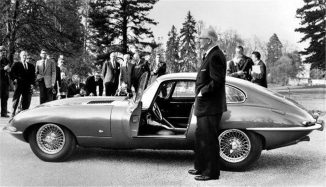
One of the reasons the E-Type was so successful is that it was not only faster than equivalent European sports cars, but significantly cheaper as well. The Series 2 E-Types were released mainly to comply with the U.S. Traffic and Safety Administration’s guidelines, while the Series 3, released a decade after the original, swapped its straight-six for a V-12.
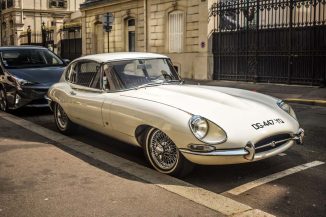
Steve McQueen, Charlton Hesston, George Best, Roy Orbison, and Frank Sinatra all had E-Type Jags. Such is the admiration and love of the classic E-Type that some modern companies will take a customer’s antique E, and modify it with all-new brakes, suspension, and more to bring its beauty into the 21st century. WATCH a short homage to the classic jag by none other than Jeremy Clarkson… (1961)
163 years ago today, Italy became a nation-state for the first time. Inspired by Spaniards who created their own constitution in 1812, leaders on the Italian peninsula began embracing the ideal of unification. They persevered through struggle against the Austrian Empire—which controlled the Italian-speaking northeast—and in strong opposition to the Pope, who controlled Rome.
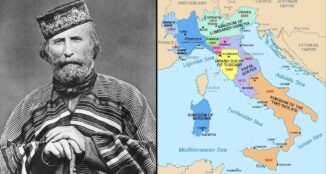
Fight, they did for years—with Giuseppe Garibaldi (from Sardinia, pictured) being named ‘The Hero of Italian Unification’. Many leading revolutionaries of the day wanted a republic, but eventually Victor Emmanuel II (from Piedmont) became the first king, when most of the major city-states unified into a single Italy.
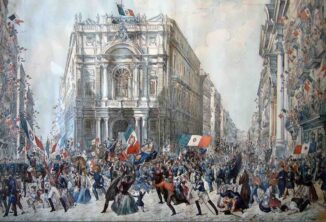 Two remaining prizes were soon won: a deal with Prussia allowed Italy to annex Venice, and pressure on the papacy to claim Rome paid off—and the city became the new Italian capital. (1861)
Two remaining prizes were soon won: a deal with Prussia allowed Italy to annex Venice, and pressure on the papacy to claim Rome paid off—and the city became the new Italian capital. (1861)
Happy St. Patrick’s Day! Today is the annual holiday when Americans celebrate all things Irish. It began in New York City with immigrants from Ireland for the first time honoring their religious patron saint at the Crown and Thistle Tavern 266 years ago today. The city’s 258-year-old St. Patrick’s Day Parade is the biggest parade in the world. Interestingly, Lenten restrictions on drinking alcohol are officially lifted among Christians for this day. (1756)
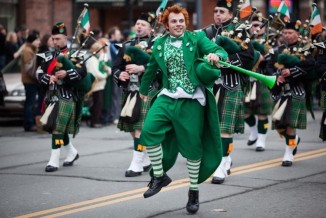
Also, 46 years ago today, U2 won a talent contest in Limerick, Ireland. Winnings included $500 and studio time to record a demo and audition for the CBS Ireland record label. Sponsored by The Evening Express and Guinness Harp Lager, the Limerick Civic Week Pop ’78 Competition afforded them the opportunity to make the first U2 recording and earned them some much-needed recognition. (1978)
105 years ago today, Nat King Cole was born. A jazz pianist and vocalist, he dropped out of high school in Chicago to pursue a music career at 15. He reached the heights of stardom in the mid-20th century, recording over 100 hit songs—often with a trio that became the model for small jazz ensembles—including the 1951 gem, Unforgettable.
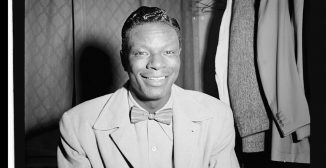
Cole also acted in films, performed on Broadway, and was the first African-American man to host a television series, The Nat King Cole Show on NBC in 1956. He died at age 45 of lung cancer, but his daughter Natalie Cole carried on the family legacy. She mixed her singing with her father’s smooth-as-silk 1961 recordings, and the result, Unforgettable… with Love, won seven Grammy awards in 1992 for Best Album and Best Song.
Many people know his voice, alone, from his famous rendition of The Christmas Song (Chestnuts roasting…). Other top hits include, The Very Thought of You, and Just the Way You Look Tonight. In this performance, Cole displays his trademark charm and effortlessness in all things perfectly. (1919)
SHARE The Milestones, Memories, and Music…




















[…] post Good News in History, March 17 appeared first on Good News […]
[…] syndMarch 19, 2018GoodNewsGoodNews […]
[…] Posted From: https://www.goodnewsnetwork.org/events070317/ […]